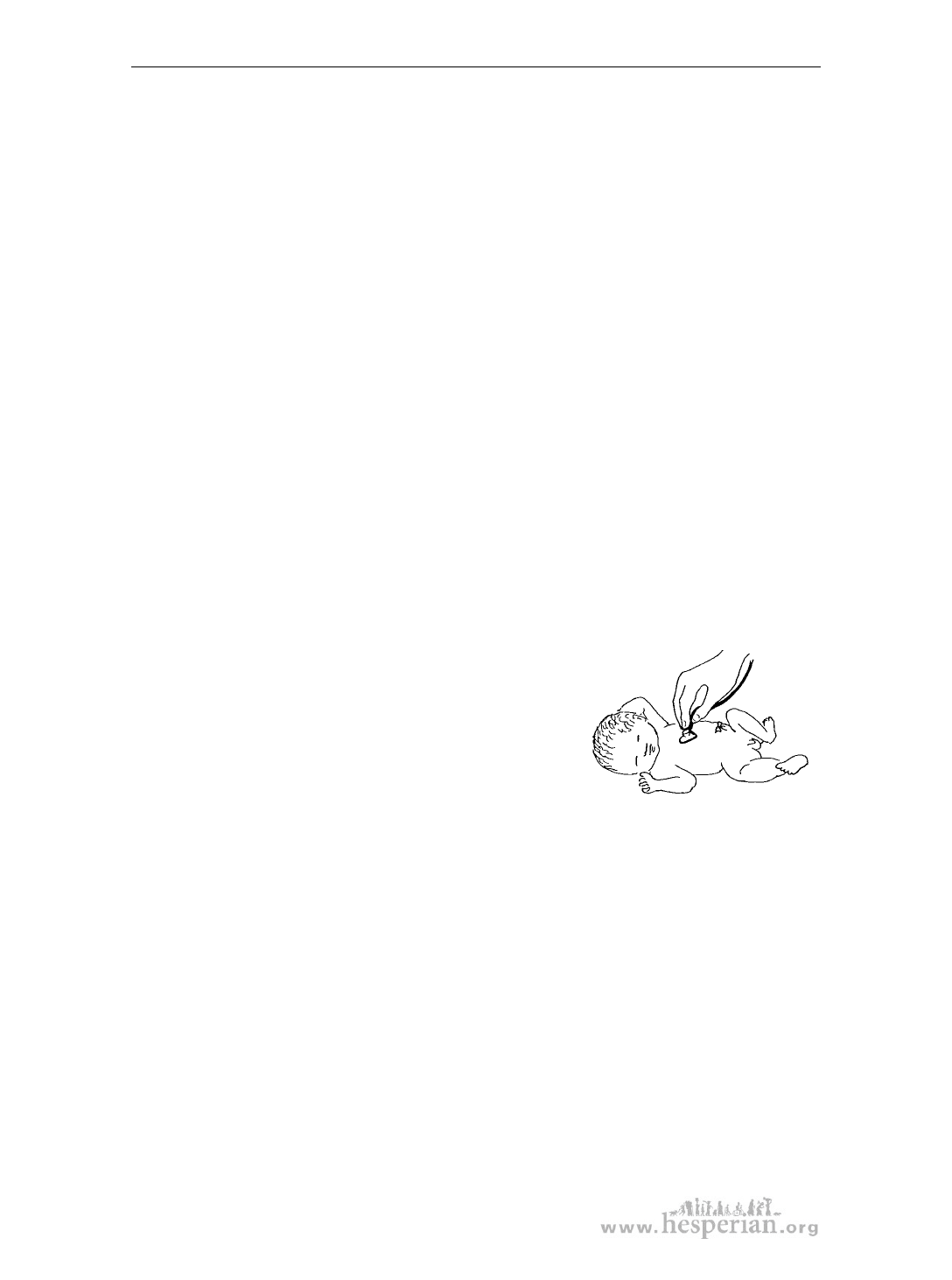
Chapter 14: The first few hours after the birth
Babies with cleft lip or cleft palate may also have more ear infections and other
health problems as they get older. Be sure the mother knows this. Also, a baby
with a cleft lip may look unusual, and some parents feel upset when they first see
their child. It is important to listen to how these parents feel, and also to remind
them of the beauty of their children.
Neck
Check the neck for swelling and lumps. Also, the baby’s head should move freely.
If you find any problems, get medical advice.
Chest
Breathing
Watch the baby breathe. If the skin between and under the baby’s ribs sucks in
when he takes a breath, the baby is having trouble breathing (see page 241).
Listen to the baby’s breathing. Use a stethoscope or fetoscope if you have one.
If not, just use your ear. You should hear breathing sounds on both sides of the
chest, and on both sides of the back. If you do not hear breathing sounds on both
sides, one lung may not be working. Get medical help immediately.
Count the baby's breaths when she is quiet, not breastfeeding or crying. If the
baby breathes more than 60 breaths a minute, she may have an infection and need
medical help. See page 256.
Heart sounds
If you have a stethoscope or fetoscope, use it to listen to
the baby’s heart sounds too.
It is hard to describe heart sounds in a book. If
possible, someone should teach you what normal
heart sounds are like. But listen to the baby’s heart
sounds even if you are not skilled. Over time you will learn
what sounds normal, and will be able to notice unusual sounds. If the heart
sounds unusual, get medical advice.
Shoulders, arms, and hands
Look at the baby’s arms and hands. Do they look normal? Does the baby move
them normally?
Sometimes a baby’s shoulder, collarbone, or arm breaks during the birth. Feel
them to see if there are any odd lumps or breaks. A baby with a broken bone may
cry in pain, but he may not. Simple breaks will usually heal on their own, but if
possible, get medical help. Use a cloth to wrap the arm across the front of the body
so it moves as little as possible and is not injured more when you go to get help.
262
A Book for Midwives (2010)